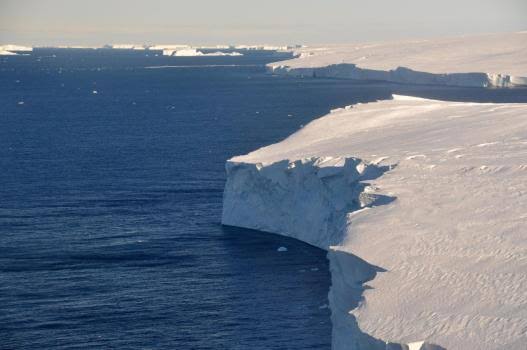Antarctic ice crumbling faster than thought

Satellite imagery analysis shows glacier losses double previous estimate
Antarctica’s coastal glaciers are shedding icebergs far more rapidly than nature can replenish the crumbling ice, doubling previous estimates of losses from the world’s largest ice sheet over the past 25 years, a satellite analysis showed Wednesday.
The first-of-its-kind study, led by researchers at NASA’s Jet Propulsion Laboratory (JPL) near Los Angeles and published in the science journal Nature, raises new concerns about how quickly climate change has been weakening Antarctica’s floating and land ice shelves and accelerating the rise of global sea levels.
The study’s key finding was that the net loss of Antarctic ice from coastal glacier chunks “calving” off into the ocean is nearly as great as the net amount of ice that scientists already knew was being lost due to thinning caused by the melting of ice shelves from below by warming seas.
Taken together, thinning and calving have reduced the mass of Antarctica’s ice shelves by 12 trillion tons since 1997, double the previous estimate, the analysis concluded.
The net loss of the continent’s ice sheet from calving alone in the past quarter-century spans nearly 37,000 square kilometers, an area almost the size of Switzerland, according to JPL scientist Chad Greene, the study’s lead author.
“Antarctica is crumbling at its edges,” Greene said in a NASA announcement of the findings.
“And when ice shelves dwindle and weaken, the continent’s massive glaciers tend to speed up and increase the rate of global sea level rise.”
The consequences could be enormous. Antarctica holds 88 percent of the sea level potential of all the world’s ice, he explained.
Ice shelves, permanent floating sheets of frozen freshwater attached to land, take thousands of years to form and act like buttresses holding back glaciers that would otherwise easily slide off into the ocean, causing seas to rise.
When ice shelves are stable, the long-term natural cycle of calving and regrowth keeps their size fairly constant.
In recent decades, however, warming oceans have weakened the shelves from underneath, a phenomenon researchers previously documented by satellite altimeters measuring the changing height of the ice and showing losses averaging 149 million tons a year from 2002 to 2020, according to NASA.
For their analysis, Greene’s team synthesized satellite imagery from visible, thermal-infrared and radar wavelengths to chart glacial flow and calving since 1997 more accurately than ever over 30,000 miles (50,000 kilometers) of Antarctic coastline.
The losses measured from calving outpaced natural ice shelf replenishment so greatly that researchers found it unlikely Antarctica can return to pre-2000 glacier levels by the end of this century.
The accelerated glacial calving, like ice thinning, was most pronounced in West Antarctica, an area hit harder by warming ocean currents.
However, even in East Antarctica, a region whose ice shelves were long considered less vulnerable, “we’re seeing more losses than gains,” Greene said.




